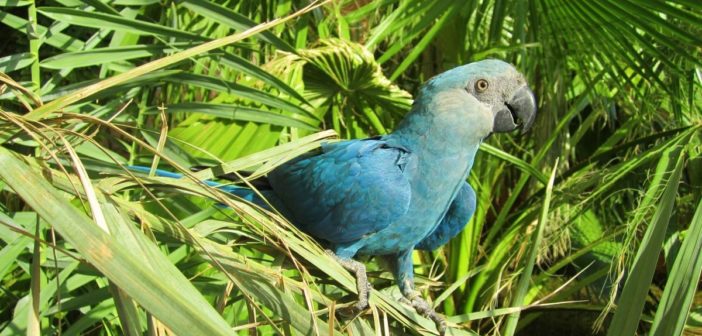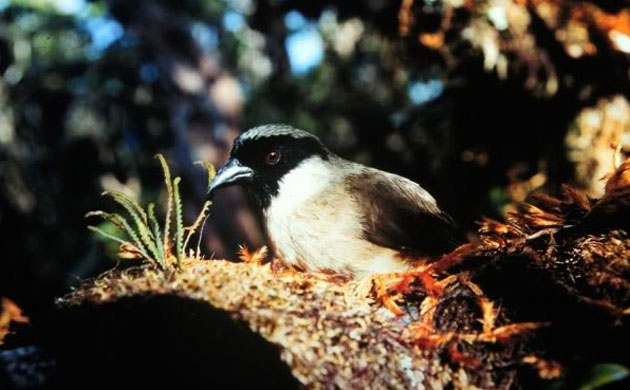Written by Alex Dale
In the 2011 animated film Rio, Blu, a captive-raised Spix’s Macaw, arrives in Brazil to mate with the last-known wild member of his species, a female named Jewel. But according to Birdlife International’s latest paper, Blu was already 11 years too late; Jewel, the last of her kind, likely perished around the year 2000.
The Spix’s Macaw (Cyanopsitta spixii) is one of eight species primed to have their extinctions either confirmed or deemed highly likely, following a new study by BirdLife International. The eight-year study used a new statistical approach to analyze 51 Critically Endangered bird species, quantifying three factors at once: intensity of threats, timing and reliability of sighting records, and the timing and quantity of search efforts for the species. Five of the eight confirmed or suspected extinctions took place on the South American continent, four of them in Brazil, reflecting the devastating effects of the high rate of deforestation in this part of the world.
“Ninety per cent of bird extinctions in recent centuries have been of species on islands” says Dr Stuart Butchart, BirdLife’s Chief Scientist and lead author on the paper. “However, our results confirm that there is a growing wave of extinctions sweeping across the continents, driven mainly by habitat loss and degradation from unsustainable agriculture and logging.”

The presumed extinct Alagoas Foliage-gleaner. Image credit: ciro_albano, via Birdlife International.
Of the eight species, it was recommended that three species should be re-classified as Extinct; Cryptic Treehunters (Cichlocolaptes mazarbarnetti) and Alagoas Foliage-gleaners (Philydor novaesi), two ovenbird species from North-east Brazil, and Poo-ulis (Melamprosops phaeosoma), formerly of Hawaii, who have not been seen in the wild since 2004 (the same year the last captive individual died).
The data also suggests another four species should be reclassified as Critically Endangered (Possibly Extinct), a category that indicates that the species is highly likely to be extinct, but further search efforts are required before they can be definitively ruled to be Extinct. These species are New Caledonian Lorikeet (Charmosyna diadema) (last sighted in 1987), Javan Lapwing (Vanellus macropterus) (last sighted in 1994), Pernambuco Pygmy-owl (Glaucidium mooreorum) (last sighted in 2001) and another Brazilian macaw, Glaucous Macaw (Anodorhynchus glaucus) (last sighted in 1998).
Hope still persists for the Spix’s, however, despite the Brazilian endemic species apparently being wiped out in the wild as a result of deforestation and other factors, such as the creation of a dam and trapping for wild trade. An estimated population of between 60-80 persists in captivity, hence the suggested classification change to Extinct in the Wild. A lone sighting in 2016 sparked hope that the species may persist in the wild, but the sighting is now suspected to have been of an escapee from captivity. If so, it is sadly highly unlikely this Blu ever found his Jewel.
Read the entire study here and learn more about Birdlife International here.
Featured image: Spix’s Macaw. Image credit: Al Wabra Wildlife Preservation, via Birdlife International.






